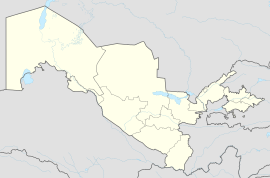The Uzbeks are a Turkic ethnic group native to the wider Central Asian region, being among the largest Turkic ethnic group in the area. They comprise the majority population of Uzbekistan, next to Kazakh and Karakalpak minorities, and are also minority groups in Afghanistan, Tajikistan, Kyrgyzstan, Kazakhstan, Turkmenistan, Russia, and China. Uzbek diaspora communities also exist in Turkey, Saudi Arabia, United States, Ukraine, and other countries.

Qarshi is a city in southern Uzbekistan. It is the capital of Qashqadaryo Region. Administratively, Qarshi is a district-level city, that includes the urban-type settlement Qashqadaryo. It has a population of 278,300. It is about 520 km south-southwest of Tashkent, and about 335 km north of Uzbekistan's border with Afghanistan. It is located at latitude 38° 51' 48N; longitude 65° 47' 52E at an altitude of 374 meters. The city is important in natural gas production, but Qarshi is also famous for its production of woven flat carpets.

Samarqand or Samarkand is a city in southeastern Uzbekistan and among the oldest continuously inhabited cities in Central Asia. Samarqand is the capital of Samarqand Region and a district-level city, that includes the urban-type settlements Kimyogarlar, Farxod and Xishrav. With 551,700 inhabitants (2021), it is the second-largest city of Uzbekistan. Most of the inhabitants of the city are native speakers of the Tajik dialect of the Persian language, although Uzbek is spoken as a second language.

Tashkent or Toshkent, historically known as Chach, Shash and Binkat, and is the capital and largest city of Uzbekistan. It is the most populous city in Central Asia, with a population of 3 million. It is located in northeastern Uzbekistan, near the border with Kazakhstan.

The Fergana Valley in Central Asia lies mainly in eastern Uzbekistan, but also extends into southern Kyrgyzstan and northern Tajikistan.

Khiva is a district-level city of approximately 93,000 people in Khorazm Region, Uzbekistan. According to archaeological data, the city was established around 1500 years ago. It is the former capital of Khwarezmia, the Khanate of Khiva, and the Khorezm People's Soviet Republic. Itchan Kala in Khiva was the first site in Uzbekistan to be inscribed on the World Heritage List (1991). The astronomer, historian and polymath, Al-Biruni was born in either Khiva or the nearby city of Kath.

Türkmenabat, formerly Çärjew, is the second-largest city in Turkmenistan and the administrative centre of Lebap Province. As of 2009, it had a population of approximately 254,000 people. it was briefly named Leninsk in honor of Vladimir Lenin.
Jizzakh is a city and the center of Jizzakh Region in Uzbekistan, located in the northeast of Samarkand. Jizzakh is a district-level city. The population of Jizzakh is 179,200. Uzbekistan's President Shavkat Mirziyoyev was born in the district of Zaamin in the Jizzakh region.
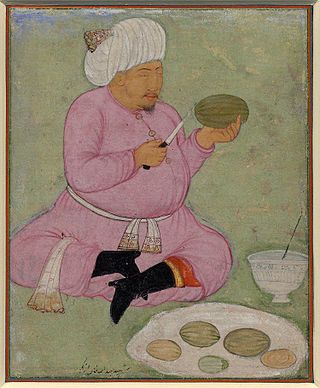
Abdullah Khan (1533/4–1598), known as "The old Khan", was an Uzbek ruler of the Khanate of Bukhara (1500–1785). He was the last Shaybanid Khan of Bukhara from 1583 until his death.
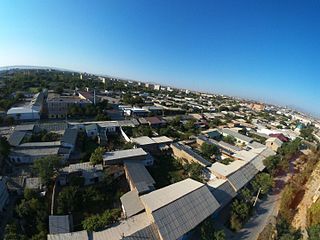
Karmana is an urban-type settlement and seat of Karmana District in Navoiy Region in Uzbekistan. The town population in 1989 was 16,767 people.

Urgench is a district-level city in western Uzbekistan. It is the capital of Xorazm Region. The estimated population of Urgench in 2021 was 145,000, an increase from 139,100 in 1999. It lies on the Amu Darya River and the Shavat canal. The city is situated 450 km (280 mi) west of Bukhara across the Kyzylkum Desert.
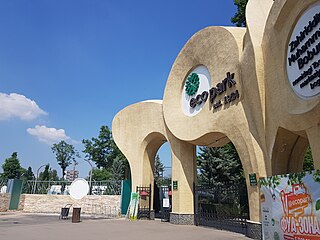
Today, the museums of Uzbekistan store over two million artifacts, evidence of the unique historical, cultural, and spiritual life of the Central Asian peoples that have lived in the region.
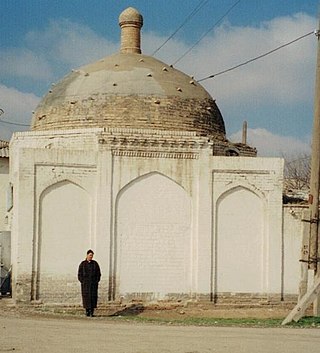
Gʻuzor is a city in Qashqadaryo Region of Uzbekistan. It serves as the administrative center of Gʻuzor District. Its population is 24,500 (2016).
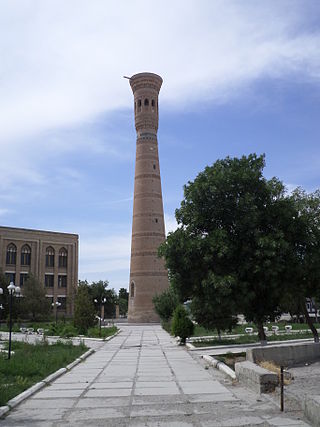
Vobkent is a city in the Bukhara Region of Uzbekistan and the capital of Vobkent District. It is famous for a minaret constructed in 1196–1198, under the reign of Ala ad-Din Tekish.
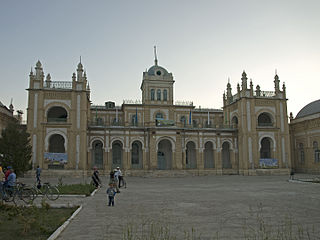
Kogon is a district-level city in Bukhara Region in Uzbekistan. It is also the seat of Kogon District, but not part of it.

The Syr-Darya Oblast was one of the oblasts of the Russian Empire, a part of Russian Turkestan. Its center was Tashkent.

The Tashkent–Bukhara high-speed rail line is a 600-kilometre (373 mi) high-speed rail connection between Tashkent and Bukhara, two major cities in Uzbekistan. The route passes through six regions: Tashkent, Sirdaryo, Jizzakh, Samarqand, Navoiy, and Bukhara in Uzbekistan. Trains operate seven days a week under the brand name Afrosiyob. The line originally ran from Tashkent to Samarqand, but an extension to Bukhara went into operation on 25 August 2016. Travel from Tashkent to Bukhara, a distance of 600 km (373 mi), now takes 3 hours and 20 minutes instead of 7 hours.
Russians in Uzbekistan comprised the country's second-largest ethnic group after Uzbeks, numbering 1,653,478, in 1989 representing 5.5% of the population. During the Soviet period, Russians constituted more than half the population of the capital city, Tashkent. Uzbekistan counted nearly 1.5 million Russians, 12.5% of the population, in the 1970 census.
Chiroqchi is a city in Qashqadaryo Region, Uzbekistan. It is the capital of Chiroqchi District. Its population is 23,800 (2016).
Vera Andreevna Bulatova was a Russian–born Uzbekistani archaeologist, architectural historian and museologist. She authored over thirty works in her lifetime on the archaeology and history of Central Asia.
